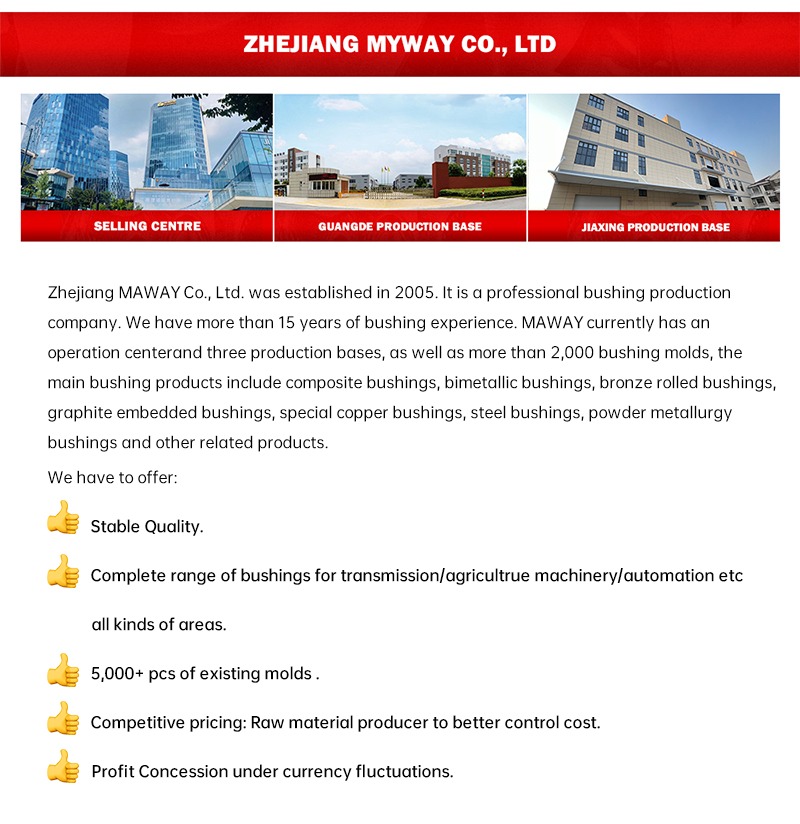How to choose the most appropriate bushing material

Choosing the appropriate bushing material is crucial for equipment performance. Different materials of bushings have their own advantages and disadvantages in terms of performance, durability, and applicable environment. Here are the advantages and disadvantages of several common bushing materials to help you make a wise choice.
1. Metal bushing
advantage:
High strength and wear resistance
The metal bushing has high strength and good wear resistance. Suitable for high load and high friction environments.
High temperature resistance
Metal materials can withstand high temperatures and are very suitable for high-temperature working environments.
Disadvantages:
Heavy weight
The heavy metal bushing may increase the total weight of the equipment.
Need lubrication
Most metal bushings require regular lubrication to prevent wear and corrosion.

2. Plastic bushing
advantage:
Lightweight
Plastic bushings are lightweight and suitable for weight sensitive applications.
Low friction
Plastic bushings typically have a low coefficient of friction and do not require additional lubrication.
Corrosion resistance
Plastic materials have good resistance to many chemicals and corrosive environments.
Disadvantages:
Limited carrying capacity
The strength and wear resistance of plastic bushings are not as good as metals, making them suitable for light load applications.
Poor high temperature resistance
Most plastic bushings are not suitable for high temperature environments.

3. Rubber bushing
advantage:
Good shock absorption performance
Rubber bushings can effectively absorb vibrations and reduce noise.
Corrosion resistance
Rubber has good resistance to many chemicals and the environment.
Disadvantages:
Easy to age
Rubber bushings may age and harden after long-term use.
Limited carrying capacity
Rubber bushings have lower strength and are suitable for low load and shock absorption applications.

4. Composite material bushing
advantage:
Superior comprehensive performance
Composite materials combine the advantages of multiple materials and possess characteristics such as high strength, wear resistance, and lightweight.
Customization
It can be customized according to specific application needs and has a wide range of applications.
Disadvantages:
High cost
Composite material bushings are usually more expensive.
How to choose the appropriate bushing material?
1. Consider the work environment:
Corresponding materials should be selected for high temperature, high load or corrosive environments.
2. Evaluate equipment requirements:
Determine the specific requirements of the equipment for strength, wear resistance, shock absorption performance, etc.
3. Cost and maintenance:
Considering the cost and maintenance requirements of the bushing, choose materials with high cost-effectiveness.
Choosing the appropriate bushing material can not only improve equipment performance, but also extend its service life. I hope the above analysis can help you make a wise choice. If you have any questions, please feel free to contact us at any time.









